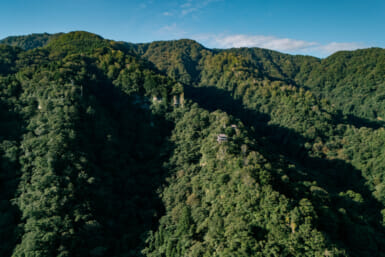MASATO HARADA, 55, has established a unique, multidimensional career spanning both the Japanese and international worlds of cinema. From bases in London, Los Angeles and Tokyo, he has written about the foreign and Japanese movie industries. As a screenwriter and director, he has taken on the role of social critic through movies dealing with such controversial issues as discrimination (Kamikaze Taxi), sexism and juvenile delinquency (Bounce: Ko Gals), and political corruption (Jubaku). He also wrote the subtitles for Stanley Kubrick’s Full Metal Jacket and played the role of the villainous Omura in The Last Samurai. He talked shop with Kirk R. Patterson.
WEEKENDER: What led you to establish a career in the movie industry.
HARADA: At the age of five, I saw The Search, directed by Fred Zinnemann. There was a scene in that movie in which an American GI gives a war orphan a piece of bread. That scene had an immediate impact on me and has come to symbolize in my mind how powerful a film can be.
I grew up in Numazu in the Izu Peninsula, which was a popular location for filming movies. My mother owned a ryokan (Japanese inn) and so we often had film crews staying with us, and through that we came to know an assistant cinematographer. Once, at the age of ten, we were visiting him in Kyoto and he showed me a screenplay. For me, that was like discovering the Bible — a whole new world was opened up to me.
How did you eventually break into the business?
In 1972 I went to England to study English, but I spent all my time watching movies — 600 in just six months. One night at the National Film Theater, Peter Bogdonovich gave a lecture on his new film, The Last Picture Show — I wrote about it for Kinema Jumpo, Japan’s oldest film magazine, and that got me started as a film journalist.
I moved to Los Angeles in 1973 and became the Hollywood correspondent for Kinema Jumpo. That gave me many opportunities to interview directors about their “craft.” It also gave me the confidence to become a screenwriter, leading me to write and direct Goodbye Flickmania, released in 1979.
How was the film received?
The film was released in both Japan and the United States, and the very different reactions of the audiences shocked me.
In Japan, the film got terrible reviews, partly because it was thought unacceptable for a film journalist to actually make a movie. In the traditional Japanese system, an individual joins a movie studio and gradually moves through different positions, perhaps ending up many years later as a director. In such a system, creative new ideas are discouraged — they don’t want to discover anything new.
By contrast, the film was warmly welcomed in the U.S. It was appreciated precisely because it was new and different, specifically because it had a subtle homosexual theme that was considered quite daring at the time.
How did that different reaction in the U.S. and Japan make you feel?
It made me very angry. And I expressed that anger in an article I wrote for the magazine Popeye, in which I criticized film commentators, even naming certain individuals. As a result, I made many enemies in the Japanese film industry, and many of those people have yet to forgive me. Well, what can I say? I was young!
How do you view the Japanese film industry today?
It is dominated by the old-fashioned studio system, which is very clannish and resistant to cooperating with others. But it is slowly changing.
One of the keys to changing the Japanese film industry is to bring in foreigners — foreign investors, directors, producers, actors, and so on, and not just from the U.S. but also from China, Korea and elsewhere. These foreigners bring with them different ways of doing things, both small and big — from serving hot lunches (not cold bento) to film crews to paying up-front development money for writing screenplays (instead of screenwriters having to write a script and then try to sell it).
The success of The Last Samurai has also challenged some traditional practices. Because it was filmed on authentic-looking 16th Century sets in the U.S. and New Zealand, Japanese movie makers now realize that it is possible to shoot period pieces in cheaper overseas locations.
One major trend is the emergence of the New Asian Cinema. Japanese studios are now making films with the Korean market also in mind, and they are starting to shift their post-production operations to Korea, Hong Kong and other low-cost Asian facilities. And the international success of the Chinese film Crouching Tiger, Hidden Dragon has brought global attention to the markets and creative talents of the region.
Ultimately, the real source of change will be the emergence of international co-production deals. With people from the U.S., Japan and other countries working together, a dynamic movie-making style that stresses creativity and individualism will emerge. That is what I try to achieve in all my work, and I hope that the result will be a greater openness to foreign cultures in Japan.
Kirk R. Patterson, the Dean of Temple University, can be contacted at [email protected]









